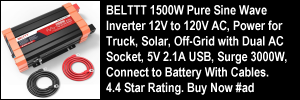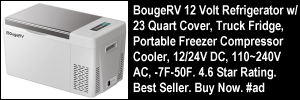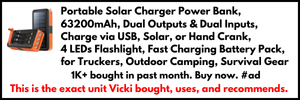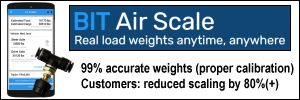By: sh,
parkland wa
 instantly goes to power failure?…..help……
instantly goes to power failure?…..help……
—–
Response from Vicki:
Hello,
Thank you for your question. While we are not experts on DC/AC power inverters, here are some ideas that may help since we trust that you have already read the information on our inverter and inverter troubleshooting pages.
There are two types of inverters most commonly used in commercial motor vehicles: the type you plug into a cigarette lighter or 12-volt power source and the type you connect to your batteries.
If you’re experiencing a power failure on a 12-volt connected DC/AC power inverter, one of two things could be wrong: either the inverter is bad or the outlet is bad. Try the plug-in inverter on another outlet to see if it works there. If it doesn’t work on any of the 12-volt outlets in your truck and you know the outlets work, the inverter is bad and needs to be replaced.
For the purposes of the rest of this answer, I will address a battery-connected inverter.
1. When you purchase a battery-connected DC/AC power inverter, you have to have certain things for installation. Assuming that you’re installing this in your truck, you will need the inverter itself, the installation kit (black and red cables to connect the inverter to the batteries), properly charged batteries, and the right tools (most likely a screwdriver and pair of gloves). If you are connecting this under your bunk, you will need to locate the place in the floorboard to run the cables through.
2. You will need to make sure to follow the manufacturer’s directions for installing the inverter. Make sure you don’t do anything that would short out the system. Be especially careful regarding the flow of power.
3. Some trucking companies insist that your inverter draws no more than a certain amount of watts from the batteries. If your company has such a restriction, make sure that you don’t exceed the maximum watts you can draw.
4. Furthermore, some companies may want for you to install a fuse between the inverter and batteries. If you’re using one, make sure that the fuse is in good working order. (We once had a fuse go bad after working well for months. Our saga on that account is captured on our inverter troubleshooting page.)
5. Double-check your connections. Make sure that the red and black cables are on the right posts.
6. Once the inverter is properly connected and the flow of power is on, turn on the unit. If it fails, check the fuse. If you don’t have a fuse, you may have a bad unit.
7. If you have a bad unit and you’ve had it for 30 days or less, take it back to the truck stop or store from which you bought it for an exchange. If you’re far from the actual location where you bought it but you bought it from a chain, see if you can exchange it at another store within the chain. Just make sure to take your receipt and pack up everything in the box to take it back for an exchange.
8. If you get another inverter and try the same installation with the same cables and you’ve followed all the steps in order and you get the same results, it is possible (although we don’t know how likely) that the installation kit cables may be bad.
9. We have found it helpful to have someone at the shop for the companies we’ve driven for to install the inverter for us. That way, we know it has been done the way they want it done.
10. Make sure that you don’t plug anything into the inverter that draws more power than the unit can deliver. For example, if you try to run an appliance that pulls 1500 watts (like a hot pot) but your inverter delivers only 1000 watts, of course it won’t work.
11. One other thing to check is to make sure that you haven’t fried your connections between the inverter and the cables by letting something get too close. Once, before we got the type of inverter that had sheaths to cover the inverter/cable connections, something accidentally got too close to one of the connections and fried it. If you store items near the inverter, make sure they can’t jiggle around and touch the connections. The movement of a truck in transit can cause things inside the tractor to shift sometimes.
12. If you’ve had your inverter for over 30 days and it has worked previously but no longer works, something has changed. Perhaps the unit has reached the end of its useful life. Check your owner’s manual or manufacturer’s website for troubleshooting help. If the unit is bad but still under warranty, check the manufacturer’s return policy. Battery-connected inverters are not light, so it may be a bit expensive to mail it back. Weigh your options regarding sending a unit back versus just replacing it. Inverters are less expensive than they used to be, so sending a bad one back may not be cost effective.
I was surprised (pleasantly, but still surprised) to find one online retailer selling name brand inverters that are not sold in truck stops. One example is shown below from Amazon.com, with which we have an affiliate relationship.
Why truck stop chains don’t sell these better known brands is beyond me, but there it is, for better or worse.
Name brand inverters may or may not be better quality than those you can find at a truck stop. I would be interested in a head-to-head comparison of quality between various brands of inverters.
If you need your inverter right away and do not want to wait to receive any product you may choose to order, it may be best to buy your inverter at a truck stop.
Then again, if you can get by without a big unit for a little while, many small crock pots (although certainly not all of them) pull no more power than can be delivered through a 12-volt plug-in type inverter.
I trust this is helpful.
We wish you safe travels and lots of money saving opportunities on the road!
Best regards,
Vicki Simons















